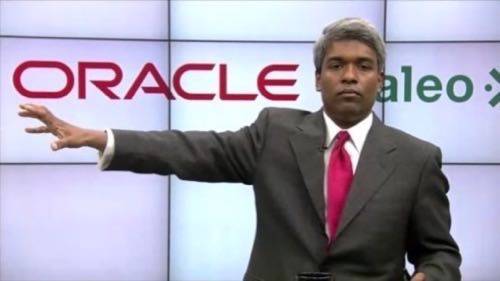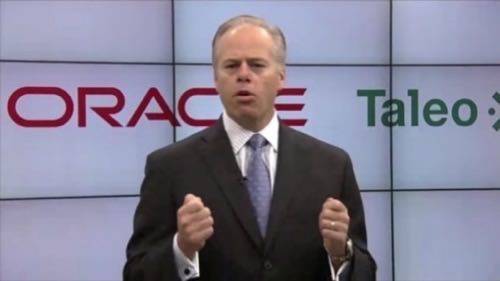Consider something called a talent profile. It’s a digital portfolio that encapsulates your work history, your skill set, your accomplishments, and your faults. It can be used to rate you. It will reside on a cloud-based service. In the sense that you will always have access to it, you own it. In the sense that human resources departments worldwide will also always have access to it, so do they.

This is not science fiction, nor is it even sophomoric prediction. Oracle’s acquisition of talent management service Taleo two weeks ago makes it the storekeeper of what has already become the largest and most utilized global database of talent resources and data. And in a webcast this morning, Oracle executives spelled out in no uncertain terms how this portable talent profile will become the thing that determines whether you attain and hold a job in the 21st century.

“Imagine if you had the capabilities of a manager to look at your organization chart, and browse the organization chart… but find the people within the organization chart using a talent browser,” stated Thomas Kurian, Oracle’s executive vice president for development. “So you can quickly and effectively find the best talent for a position or need that you have. Secondly, we also want to create a talent directory. [It’s] basically a portable talent profile that’s attached to every employee or candidate, that’s then integrated with recruiting and sourcing, so you can look outside of the company and look at all the pipelined candidates that are out there, and where you’re considering sourcing from, to get a view of what the talent outside of the organization is. This allows you to find, recruit, and retain the best people.”

As Taleo CEO Michael Gregoire (who may retain that title as chief of an Oracle division) explained early in the webcast, Taleo is already the mother lode of employee talent data. “We have 1,400 experts in this area working for us. We service 5,000 customers, and Taleo manages 15% of all U.S. hires. Taleo has one of the world’s largest cloud deployments, managing over 16 billion transactions a year.”
While there’s considerable discussion about businesses looking to Facebook as a trusted provider of identity – of data specifying who someone is – Taleo has been busy building a repository of what people have done. It’s being contributed to by a growing number of corporate customers.
The product of these contributions could become for individuals’ careers what credit reports have become to their financial status. Oracle and Taleo will not be without competition; SAP made a similar acquisition play with SuccessFactors last December, and analysts are expecting Salesforce’s new Successforce – created from its acquisition of Rypple the same month – to produce an equally competitive cloud-based talent management provider.
But the three of these players alone will establish a baseline of expectations from HR departments, for what talent management should be and should become. It’s very clear from Thomas Kurian’s projection of the near future that this baseline will include the ability for HR managers to scan the planet in real-time, gauging whether each person on the org chart is better suited for that position than anyone outside the org chart.
“To plan, predict, and optimally source your workforce, we want to integrate predictive analytics with recruiting, so you can understand your workforce structure, your recruiting needs, and talent gaps,” explained Kurian. “To make sure you’re going after the right, the best talent, but integrating recruiting performance management talent reviews, we allow managers to define the critical roles they have and source the top talent they have for positions internally, so you don’t even need to go outside the organization to find the best people.”
Once employees are firmly involved in the performance management process, Kurian went on, your business will want to use these tools to help retain them. Here is where he introduces us to a wealth of new and curious euphemisms: “You need to have a view of which employees are at a risk, and identifying new opportunities for talent employees who are at risk. Second, you want to empower employees to develop their own careers, so that employees don’t feel that the only person responsible for their careers is their manager or the HR professional. Third is to tailor human resources practices and to optimize them based on the population of employees, their skills profiles, and cultural practices.”
Given that Oracle is interested in making Taleo’s talent profiles available to employees as well as HR managers, we can and probably should expect to see some form of employee-level service for accessing and perhaps maintaining talent profiles. One such a service, or services in that genre, become ubiquitous, then the use of a résumé to represent one’s curriculum vitae may become passé.
Stock photo by Shutterstock.com

















